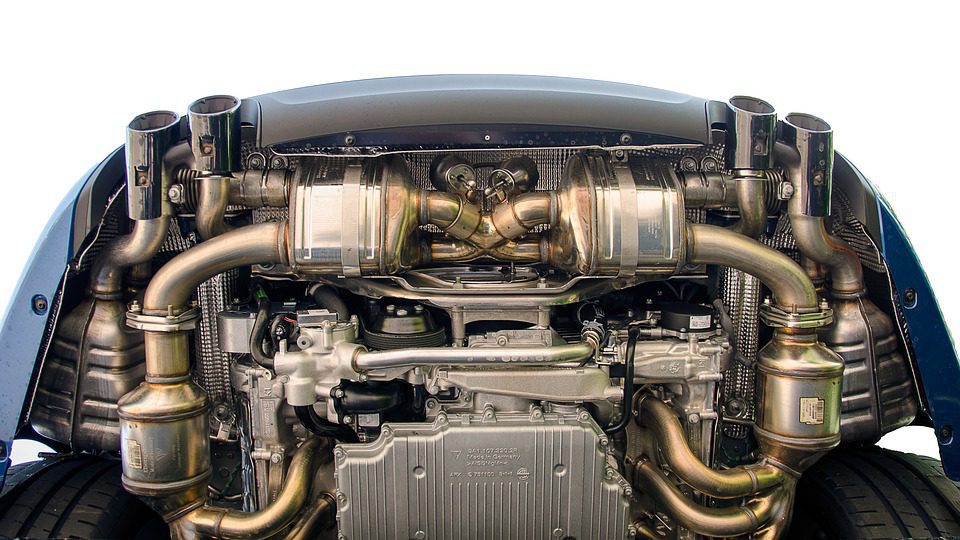Opel Corsa Engine: Whatever You Required to Know Prior To Purchasing
Opel Corsa Engine: Whatever You Required to Know Prior To Purchasing
Blog Article
Discovering the Inner Functions of a Compact Vehicle's Engine System
As vehicle drivers, we usually take for given the intricate processes that take place within the boundaries of our lorry's engine system. In this expedition of a portable car's engine system, we will certainly unwind the inner workings of this mechanical symphony, losing light on the mysteries that drive us onward on our day-to-day journeys.
Combustion Refine Review
The burning process in a small car's engine system is a critical device that efficiently transforms fuel into power to power the vehicle. This procedure happens within the burning chamber of the engine, where gas and air mix, spark, and create regulated surges. The burning process includes 4 main phases: consumption, power, exhaust, and compression.
Throughout the consumption phase, the piston relocates downward, pulling in a combination of air and fuel right into the burning chamber. The next phase, compression, involves the piston relocating upward, pressing the air-fuel mixture to enhance its effectiveness. Consequently, in the power stage, the ignition system sparks the compressed blend, causing a rapid growth of gases that requires the piston back down. This downward movement generates the power required to drive the car. Ultimately, in the exhaust stage, the scorched gases are eliminated from the burning chamber via the exhaust shutoff, preparing the chamber for the following cycle. This cyclic burning process is fundamental to the operation of a compact vehicle's engine system, making sure effective power conversion for propulsion.
Piston and Cyndrical Tube Interaction

The piston's accurate fit within the cyndrical tube is necessary for keeping optimal compression and stopping energy loss during burning. Limited clearances in between the piston and cylinder wall surfaces ensure efficient sealing, permitting the piston to move efficiently without enabling gases to leak past. Correct lubrication is also crucial to reduce rubbing and put on between these parts, improving long life and efficiency.
Moreover, the style and materials utilized in manufacturing the piston and cyndrical tube impact engine efficiency and durability. Modern engines typically employ light-weight yet sturdy materials like light weight aluminum alloys for pistons and cylinder linings to decrease inertia and enhance thermal performance. Overall, the unified interaction between the piston and cyndrical tube is essential to the engine's functionality find more info and general efficiency.
Fuel Injection System Capability
Fuel shot systems in compact car engines play an important function find more info in precisely providing fuel to the combustion chamber for regulated and effective ignition. The gas shot system operates by infusing gas into the burning chamber at the optimum moment during the engine's procedure (opel corsa engine). This specific timing guarantees that the fuel blends uniformly with the air for proper combustion, causing boosted gas effectiveness and minimized exhausts
There are mostly 2 sorts of gas injection systems used in portable automobile engines: port gas injection (PFI) and straight fuel injection (DFI) PFI systems inject fuel into the consumption port prior to the intake shutoff, while DFI systems inject gas straight right into the burning chamber. Both systems have their advantages, with DFI providing better gas atomization and PFI offering a more cost-effective option.
Comprehending Engine Cooling Mechanisms
Effective operation of a portable automobile's engine counts greatly on the efficiency of its cooling mechanisms. The air conditioning system in a compact vehicle commonly consists of a number of components working with each other to manage the engine temperature level. Understanding these engine air conditioning mechanisms is vital for keeping the efficiency and long life of a compact vehicle's engine system.

Exhaust System Components Explained
The optimal functioning of a portable car's engine air conditioning mechanisms depends on a corresponding system known as the exhaust system, which comprises various essential components for guaranteeing reliable discharges and engine efficiency. The exhaust manifold gathers exhaust gases from the engine's courses and cylinders them to the catalytic converter.
One vital component of the exhaust system is the oxygen sensing unit, which keeps an eye on the oxygen degrees in the exhaust gases to aid regulate gas usage and make sure ideal engine efficiency. opel corsa engine. In addition, the resonator may be present in some exhaust systems to reduce noise degrees. Overall, more the exhaust system plays an important duty in keeping engine performance, minimizing harmful exhausts, and making certain a quieter driving experience for small vehicle proprietors

Conclusion
To conclude, the portable lorry's engine system is a complex mix of parts that interact to promote the combustion process, convert gas into power, and get rid of waste gases. Recognizing the internal workings of the engine system, including the piston and cylinder communication, gas injection system, engine air conditioning devices, and exhaust system components, is critical for maintaining optimal performance and effectiveness of the car.
The combustion procedure in a compact lorry's engine system is an important system that effectively transforms gas right into energy to power the vehicle.Fuel injection systems in portable lorry engines play a vital function in specifically providing gas to the burning chamber for regulated and efficient ignition.There are primarily 2 kinds of fuel injection systems made use of in compact lorry engines: port fuel injection (PFI) and straight gas shot (DFI) Comprehending these engine cooling systems is vital for maintaining the efficiency and longevity of a small vehicle's engine system.
The optimal performance of a small car's engine cooling mechanisms depends on a complementary system recognized as the exhaust system, which consists of different essential components for making sure efficient exhausts and engine performance.
Report this page